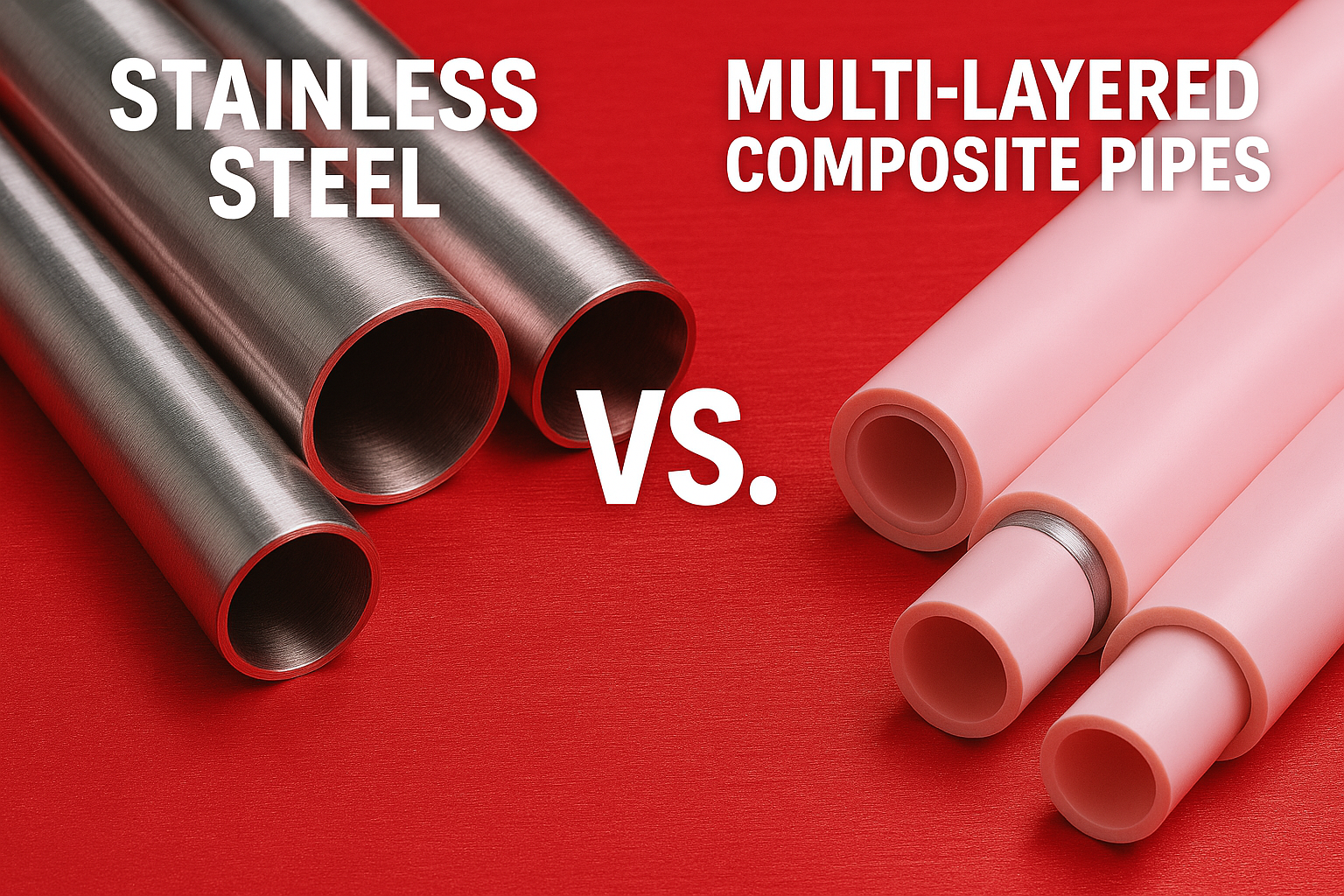When it comes to selecting the right piping system for industrial, commercial, or residential use, the decision often boils down to two popular options: stainless steel (SS) pipes and multi-layered composite pipes. Each material has its unique advantages and limitations, making them suitable for different applications. In this blog, we’ll explore the key differences between these two options, focusing on their durability, efficiency, safety, and cost-effectiveness.
Durability and Strength
Stainless Steel Pipes: Stainless steel pipes are synonymous with durability and strength, ensuring reliable functionality. Made from high-grade alloys, these pipes exhibit exceptional resistance to corrosion, heat, and pressure. For instance, Rhinox stainless steel pipes are manufactured with precision to ensure longevity and reliability, even in challenging environments. Their durability makes them a go-to choice for industries like oil and gas, chemical processing, and water treatment.
Multi-Layered Composite Pipes: Composite pipes, often made from layers of plastic and aluminum, offer decent durability but fall short compared to stainless steel. While these pipes are lightweight and flexible, their performance can degrade under high pressure or extreme temperatures. Over time, the plastic layers may weaken, compromising the pipe’s structural integrity.
Corrosion Resistance
Stainless Steel Pipes: Stainless steel is distinguished by its superior ability to withstand corrosion. SS pipes are particularly suited for water distribution and other applications where exposure to moisture and chemicals is common. Products like Rhinox press fittings ensure leak-proof and corrosion-resistant connections, further enhancing the lifespan of the system.
Multi-Layered Composite Pipes: Composite pipes offer some degree of corrosion resistance due to their plastic layers. However, the aluminum core can corrode if exposed to certain chemicals or if the protective plastic layers are damaged. This limitation makes them less reliable in highly corrosive environments.
Safety and Hygiene
Stainless Steel Pipes: Stainless steel is inherently hygienic and non-reactive, making it an ideal material for transporting drinking water and food-grade liquids. Unlike some plastics, it doesn’t leach harmful substances into the fluid, ensuring safety and purity. This makes stainless steel pipes a preferred choice in industries where hygiene is paramount.
Multi-Layered Composite Pipes: While composite pipes are generally considered safe for water transportation, the plastic layers can sometimes degrade over time, releasing microplastics or chemicals into the water. This is a critical drawback, especially in applications involving potable water.
Installation and Maintenance
Stainless Steel Pipes: Modern stainless steel systems, such as those from rhinoxwepit, are designed for easy and efficient installation. With advanced technologies like Rhinox press fittings, installation is faster and requires minimal tools. Maintenance is also straightforward, as stainless steel pipes are resistant to scaling and blockages.
Multi-Layered Composite Pipes: Composite pipes are lightweight and flexible, which simplifies installation, especially in tight spaces. However, their fittings and connections can be more complex, often requiring specialized tools. Maintenance can be more frequent due to the potential for leaks or damage to the plastic layers.
Cost-Effectiveness
Stainless Steel Pipes: While stainless steel pipes may have a higher upfront cost, their longevity and low maintenance requirements make them a cost-effective choice in the long run. They offer exceptional value for money, particularly in demanding applications where reliability is critical.
Multi-Layered Composite Pipes: Composite pipes are generally less expensive initially, making them attractive for budget-conscious projects. However, their shorter lifespan and higher maintenance costs can offset these savings over time, especially in industrial settings.
Environmental Impact
Stainless Steel Pipes: Stainless steel is fully recyclable, making it an eco-friendly option. Its long lifespan also reduces waste, contributing to sustainability. Companies like Rhinox emphasize environmentally responsible manufacturing practices, further enhancing the green credentials of stainless steel products.
Multi-Layered Composite Pipes: Composite pipes are less eco-friendly due to their plastic content, which is not biodegradable. Recycling composite materials is also more challenging compared to stainless steel, resulting in a higher environmental footprint. MLC pipes are best suitable for costal areas where water is too salty.
Applications
-
Stainless Steel Pipes:
- Ideal for industries requiring high strength, corrosion resistance, and hygiene.
- Commonly used in water distribution, gas pipelines, and food processing.
-
Multi-Layered Composite Pipes:
- Suitable for low-pressure applications and residential plumbing.
- Often used in heating systems and non-critical water supply lines.
Conclusion
Both stainless steel pipes and multi-layered composite pipes have their place in the piping industry. However, for applications demanding durability, safety, and long-term performance, stainless steel pipes emerge as the clear winner. With Rhinox press fittings and innovative solutions from rhinoxwepit, stainless steel systems offer unparalleled reliability and value.
On the other hand, composite pipes may be a cost-effective choice for less demanding applications, but they fall short in terms of durability and safety. When choosing between these two options, it’s essential to consider the specific requirements of your project and invest in a solution that delivers lasting performance and peace of mind.

